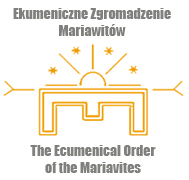May the souls of the faithful departed, through the mercy of God, rest in peace.
Last Saturday we prayed before the icons which came from his hand. The last two evenings and a good part of the night we spent accompanied by his thoughts and though we did realize that in the past few years he was neither painting, nor writing any more, all that time we had a little hope that his last words have not yet spoken, and his last icon painted. Now we know that this hope will not be fulfilled. Today Jerzy Nowosielski, the Prophet on the Rock, passed away in Cracow at the age of 88.
If death is liberation, this certainly applies to that death. The death of a man who already a few years ago considered his life to be accomplished.
… in my personal consciousness death is a catastrophe, which on the one hand arouses objection of the whole consciousness, the whole nature, and on the other hand – is inevitable. The nature itself is, in my opinion, so corrupted by the primordial cosmic catastrophe, which I cannot really name, that the fact of existence, prolonging once existence, in such a state of permanent evil, which accompanies the empirical reality, is for a more developed consciousness basically unbearable.
Source : Podgórzec Z., Rozmowy z Jerzym Nowosielskim , 2009, p. 77.
Without a doubt the attitude toward life of Jerzy Nowosielski can be seen as an example of the “Gnostic rejection” of which one of our new Facebook friends, Marek Woszczek, writes:
The Gnostic rejection … is in fact awakening in the disgusting slaughterhouse of nature, and then sensing the stench of aggression, pain and the never-ending death of everything, even of the rocks smelted and pressed somewhere in the depths of the earth, and saying to the tailor of that monstrous grotesque “no”.
Source : Woszczek M., Antropozofia i gnoza: Revelatio continua
It wouldn’t be fair not to add that however it happens sometimes that this “rejection” has something attractive about itself also for us, at the same time we can hardly accept it. Other words of the departed appeal to us more:
The rank of the empirical reality is inexpressibly high. Yet it is only a reality suffering outside of the paradise, banished from the paradise. It is the fallen Sophia. If we were to refer to the Kabbalistic categories, it would really be this fallen Sophia that suffers as a result of her banishment. The whole spiritual work of a painter, or generally of a man who is religious in a way, means cooperation in restoring this fallen Sophia to her original state of unity with the heavenly Sophia.
Source
The tombstone of Fr. Prof. Jerzy Klinger designed by Jerzy Nowosielski
We will anyway continue to struggle with all this and it’s not easy for us to accept the fact that we will have to do without new inspiring and disturbing thoughts of his.
Prof. Jerzy Nowosielski, a painter, theoretician of art, theologian, thinker and pedagogue was born in 1923 in Cracow. That is also where he started to study painting. In 1942 (as a novice in the Studite Order) he painted icons in a monastery near Lviv [The Rev. Dcn. Piotr Siwicki informed us that we made a mistake here. Jerzy Nowosielski stayed at St. John the Baptist Lavra in Lviv]. In the years 1945-47 he continued his studies at the Academy of Arts in Cracow, where he returned as a lecturer in 1962. Since 1960 he has been publishing his reflections on painting combined with religious and theological ones. He participated in nearly a hundred individual and two hundred fifty collective exhibitions in Poland and abroad. He is the author of several dozens polychromes in churches and of the project of the church in Biały Bór. He received many honorary titles and prizes, among others the honorary doctorate of the Jagiellonian University in Cracow, one of the oldest universities in Europe.
That much can be found in any encyclopedia. But who was Jerzy Nowosielski for us? Only yesterday we wrote that “popularising the reflections of this painter and religious thinker from Cracow is one of our important aims, and, as we have already said, not because we always agree with him (for we don’t), but above all because we simply can’t be indifferent both to his artistic and theological work”, and in May of the past year that “in our opinion he is the most original religious thinker in contemporary Poland.”
Should we add anything more?
Give rest eternal, O Lord, in blessed repose, to the soul of Thy departed servant, and make his memory eternal.





Striking art, intriguing worldview. I wonder how much of his apparent Gnosticism grew out of traumatic experiences in WWII?
There may be much truth in that supposition. Nowosielski told that in 1939 he saw wounded soldiers returning from the war, and a few years later only an illness saved his own life. As a novice in the Univ Lavra he got pneumonia while painting polychromes and returned to his home in Cracow for treatment. At that time the Red Army conquered Ukraine and the monks from Univ were either murdered or moved to Siberia. Their ihumen at that time, Fr. Clement Sheptytsky, is venerated as a martyr. It’s interesting what Nowosielski says about his national consciousness in that context:
And later he added that he “lives in his icons”. Perhaps that rejection of any national identity is just an expression of something more, a kind of a “Gnostic rejection”, indeed. And you know, Joe, the Slavonic people have some problems with the material reality as such. It was typical for Nowosielski, however, that he wanted to be both a Gnostic and an Orthodox Christian. His orthodoxy “was fed on heresy”. And probably also the other way around… (We will soon translate Nowosielski’s article by that title)
Thanks for your very interesting clarification. “Orthodoxy fed on heresy”, indeed!